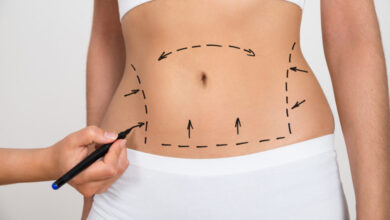Health
The Rise of Digital Dentistry: Exploring the Dental CAD/CAM Materials and Systems Market

The dental industry is rapidly embracing technological advancements, and CAD/CAM (Computer-Aided Design/Computer-Aided Manufacturing) systems are at the forefront of this transformation. Valued at USD 3.10 billion in 2023, the global dental CAD/CAM market is anticipated to grow at a CAGR of 9.4%, reaching USD 6.95 billion by 2032. Let’s explore the factors driving this growth, the emerging trends, and the key players shaping the future of digital dentistry.
What is Dental CAD/CAM?
Dental CAD/CAM systems streamline the creation of dental prostheses, such as crowns, bridges, dentures, and veneers, by allowing dentists to digitally design restorations and then manufacture them with precision. The technology is prized for:
- Precision: Provides exact fits, reducing errors and adjustments.
- Efficiency: Enables faster turnaround for dental restorations, with many procedures completed in a single visit.
- Customization: Allows dental professionals to create prosthetics tailored to the patient’s unique anatomy and aesthetics.
Key Market Trends Driving Growth
- Increasing Prevalence of Dental Disorders
- A rise in dental issues such as cavities, misalignments, and periodontal diseases is driving the demand for restorative dental procedures.
- The aging global population is a key factor. According to the United Nations, the population aged 65+ is growing rapidly, particularly in regions like North America and Europe, leading to increased demand for dental restorations.
- Advancements in CAD/CAM Technology
- Artificial Intelligence (AI) and Machine Learning are increasingly integrated into CAD/CAM systems, enabling enhanced diagnostic capabilities, greater design precision, and predictive insights that aid in treatment planning.
- 3D Printing has become an essential component in dental CAD/CAM, providing cost-effective and highly customizable prosthetics. Materials such as zirconia and lithium disilicate are now commonly used in digital dentistry for their durability and aesthetic appeal.
- Adoption of Digital Dentistry by Patients and Providers
- Patients are becoming more aware of digital dentistry’s benefits, preferring procedures that are quicker and more comfortable, such as intraoral scanning over traditional dental impressions.
- Dental professionals are adopting in-office CAD/CAM systems to streamline processes, reduce reliance on third-party labs, and deliver high-quality restorations efficiently.
- Expansion of Cosmetic and Aesthetic Dentistry
- The global demand for cosmetic dentistry is increasing, with CAD/CAM systems enabling the creation of natural-looking veneers and crowns that match patients’ existing teeth.
- Digital CAD/CAM technology allows dentists to design highly aesthetic restorations with exact shade matching and lifelike translucency, appealing to patients looking for a perfect smile.
Market Dynamics: Key Drivers, Restraints, Opportunities, and Challenges
Drivers
- Increased R&D and Product Innovation: Companies are investing heavily in R&D, focusing on biocompatible materials, improved milling systems, and cutting-edge software. These innovations enable precise and faster dental solutions, meeting the needs of patients and professionals.
- Dental Tourism: Countries with lower healthcare costs are seeing a rise in dental tourism. For instance, India, Mexico, and Thailand attract many patients from North America and Europe, boosting the demand for advanced CAD/CAM systems.
Restraints
- High Costs of CAD/CAM Systems: The initial investment required for CAD/CAM technology can be substantial, making it a barrier for smaller dental practices. Additionally, ongoing maintenance and software updates can increase operational costs.
- Shortage of Skilled Professionals: Operating CAD/CAM systems requires specialized training. In many regions, a lack of skilled professionals limits the widespread adoption of this technology.
Opportunities
- Growing Demand in Emerging Markets: As healthcare infrastructure improves, emerging markets in Asia-Pacific, Latin America, and the Middle East are embracing digital dental technology, presenting significant opportunities for CAD/CAM market expansion.
- AI-Driven Developments: The integration of AI in CAD/CAM systems can automate certain aspects of the design process, reduce human error, and enhance diagnostic accuracy. This technology is still in its early stages but holds promising applications for future growth.
Challenges
- Adoption Barriers: Integrating CAD/CAM systems into traditional dental practices requires training and workflow adjustments, which can be challenging for some clinics.
- Regulatory Hurdles: Compliance with stringent regulations surrounding medical and dental materials can delay the introduction of new products and innovations.
In-Depth Look at Leading Players in the Market
- 3M Company
- Headquarters: United States
- Key Offerings: Known for its diverse healthcare portfolio, 3M’s dental division includes products like adhesives, restoratives, and materials for CAD/CAM applications. The company has a long-standing reputation for quality and innovation, frequently expanding its range of biocompatible dental materials.
- Straumann Group
- Headquarters: Switzerland
- Specialization: Focuses on dental implants and digital dentistry solutions. Straumann has a strong presence in Europe and North America, offering a range of dental CAD/CAM systems and collaborating with dental institutions for training and research.
- Dentsply Sirona Inc.
- Headquarters: United States
- Key Products: Known for its state-of-the-art CAD/CAM systems, such as CEREC, which includes intraoral scanners, milling machines, and comprehensive software solutions for digital impressions and prosthetic design.
- Global Presence: Dentsply Sirona operates manufacturing facilities in over 20 countries, supporting its extensive distribution network and solidifying its position as a leader in digital dentistry.
- Amann Girrbach AG
- Headquarters: Austria
- Specialization: Recognized as a pioneer in digital prosthetics, Amann Girrbach provides comprehensive CAD/CAM solutions, from software to milling units, that cater to dental laboratories and clinics. Its focus on R&D has led to innovations that simplify and enhance dental procedures.
Emerging Technologies and Future Trends
- AI-Enhanced CAD/CAM Systems:
- AI is reshaping CAD/CAM systems by enabling data-driven insights for customized treatments, improving accuracy, and reducing design time. This trend is expected to accelerate, with AI-based applications expanding into diagnostic tools.
- 3D Printing Materials and Techniques:
- 3D printing continues to evolve, with a focus on materials that mimic natural teeth, such as biocompatible ceramics and resins. New advancements in multi-material printing allow for the creation of complex, lifelike prostheses.
- Tele-Dentistry Integration:
- Remote dental assessments and consultations are becoming more popular. By integrating CAD/CAM with tele-dentistry platforms, patients can receive treatment plans and restorations faster, especially in underserved areas.
- Sustainability in CAD/CAM Materials:
- There is a growing focus on eco-friendly materials in the dental industry. Companies are investing in sustainable alternatives, such as biodegradable or recyclable materials for dental restorations, aligning with global environmental concerns.





